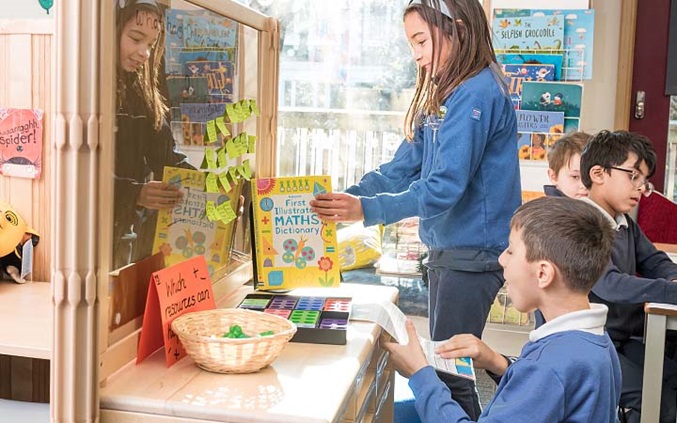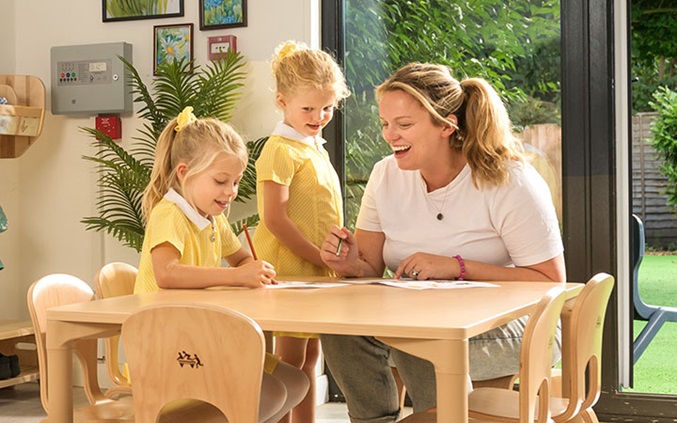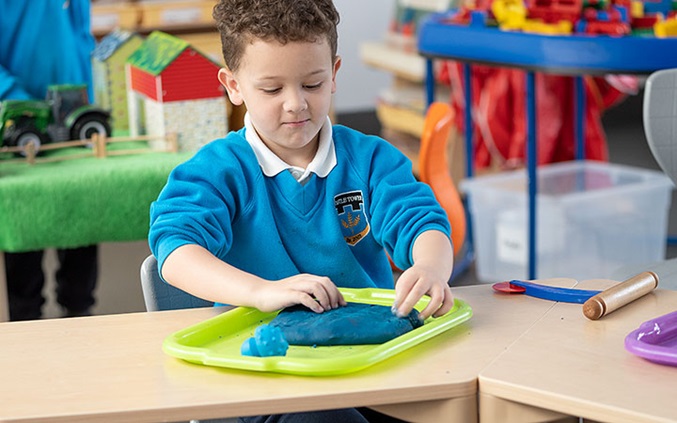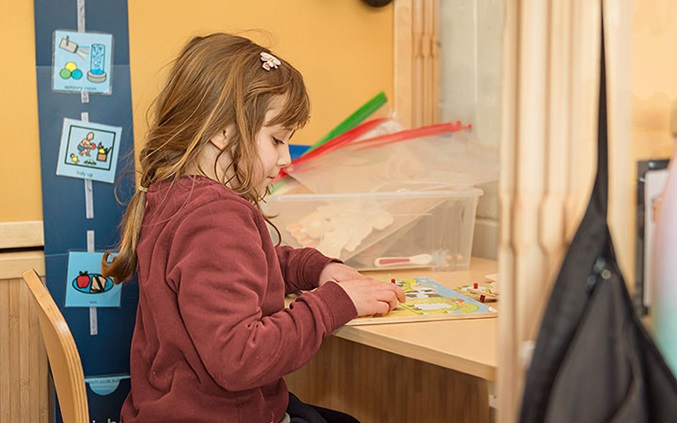Inspiring inclusion in early years
SEND practice in mainstream settings
| April 2023In reality, including children with special educational needs in a mainstream setting is challenging to achieve. It entails cooperation, clear communication and a curriculum that is customised to suit each child’s unique needs. I visit a lot of settings, and where inclusion is done well, there is often a skilled and trusted practitioner at the heart of it, working hard to create an approachable environment that nurtures each child’s learning and encourages them to grow. In order to give every child a chance to succeed, we need to take a look at how our settings cater to the specific needs of each child and outline a strategy that removes the barriers to inclusion.
Inclusive curriculum
The term “enabling” has become a buzzword for early years environments. We often discuss how to plan for an enabling environment, factors that contribute to its success and how to create one. But what exactly does "enabling" mean?
Simply put, it means to “make something possible” (Cambridge Online Dictionary, 2023). But what are we trying to make possible for children? Can it be measured or quantified?
As a parent, I have always strived to make everything possible for my children. As an early years educator, I support and encourage children to thrive, achieve their potential, enjoy their childhood, develop deep curiosity through a range of experiences, build the foundation for a love of learning, and develop skills for their future.
This is the dream that we share as educators. However, in practice, the approaches and methods used to achieve this goal can vary greatly. Every child has their unique way of learning, and as educators, we must adapt our teaching methods accordingly. Children with diverse learning styles may present challenges, but it is crucial that they are included in the enabling environment. After all, what good is an enabling environment if it excludes some children?

Accessible environment
“Inclusion in the early years is about practices which ensure that everyone belongs” (Nutbrown, 2012). Children learn best in an environment that is secure, safe, predictable and familiar. Feeling a sense of belonging is a fundamental human need, but unfortunately, children with diverse needs can find themselves excluded from the group. Rather than viewing interactions with these children as separate interventions, we should aim to meet their needs within the classroom environment. Adult-directed interventions outside the classroom, with clear adult-led targets, can be disorientating for neurodivergent children who lack the social imagination required to bring those skills back to the classroom with them. Meeting the child’s needs within the classroom supports the emotional connection every child has with their environment. By creating a safe and welcoming space where children feel heard and seen, educators can foster a sense of belonging that allows everyone to thrive.
Read more about accessible environments.

Child-centred approach
Inclusion can be a big challenge for educators. Is it even possible to make our environments enabling for everyone?
As an educator and parent of two neurodivergent children with two different hidden disabilities that impact their learning and development, I understand the challenges of creating an enabling environment for every child. Do they feel included? Not always. Do they feel that everything is possible for them? Not always. However, I believe that it is possible to achieve this goal by valuing each child as an individual and adapting our approach accordingly. Read more about supporting each child’s learning journey.
Nothing is impossible, the word itself says I’m possible. ” –Audrey Hepburn
Effective communication
As adults, we sometimes forget how challenging it can be for children to face obstacles that feel overwhelming. That’s why it’s so important to build a foundation of trust and emotional security with them. When we get to know them as individuals, we can offer a deeper level of connectedness that empowers them to overcome even the toughest challenges.
Inclusion derives much more from an acceptance of diversity and recognition that all children, in some senses ‘have needs’, rather than targeting some with a raft of inclusion strategies which might serve to paradoxically exclude them further. ” –Dr Rebecca Wood, Inclusive Education for Autistic Children
As educators, we need to value them as individuals and communicate with them on their level; to adapt and respond to their needs and behaviours with compassion; to alter the environment, routine and expectations to allow them to be free to explore in their own way.
Read more about effective communication.

Collaborative approach
When inclusion works…I mean really, really works – in schools and advertising and in the community, it won’t even need to be called inclusion. It will just be called life. ” –Chrissy Kelly
In light of the need to create a holistic enabling environment for all children, I have developed the ABC approach, which focuses on Attuned Adults, Belonging and Connection.
Attuned Adults refers to the importance of developing authentic relationships with children and families. We need to know our children and families well, understand their current strengths and challenges and enable them to be a valued part of the community. Furthermore, we must create a warm culture where they feel secure and develop authentic relationships. If we fully embrace neurodiversity and inclusion, children will develop trust in the adults who care for them and will seek help when they need it.
Belonging involves creating a sense of connection and acceptance, where children feel heard, seen and validated. We should acknowledge and accept their unique communication styles, play types and self-regulation strategies.
Finally, Connection means connecting with children without imposing adult agendas, mirroring their play and approaching our relationships with open curiosity and unconditional confidence in their potential.
Let’s include them. Let’s make the possible, possible.

Read more about a collaborative approach to SEND.
References
Cambridge Online Dictionary, 2023. Accessed: 18 April 2023: https://dictionary.cambridge.org/dictionary/
Kelly, Chrissy (2023). Accessed: 28 April 2023: http://www.lifewithgreyson.com/
Nutbrown, C (2012). Early Years for Everyone. Accessed: 10 April 2023: https://www.teachearlyyears.com/images/uploads/article/inclusion-in-early-years-settings.pdf
Paris, B (1998). Audrey Hepburn: A Biography. Orion Publishers Co, Paris.
Wood, R (2019). Inclusive Education for Autistic Children: Helping Children and Young People to Flourish in the the Classroom. Jessica Kingsley Publishers, London and Philadelphia.







